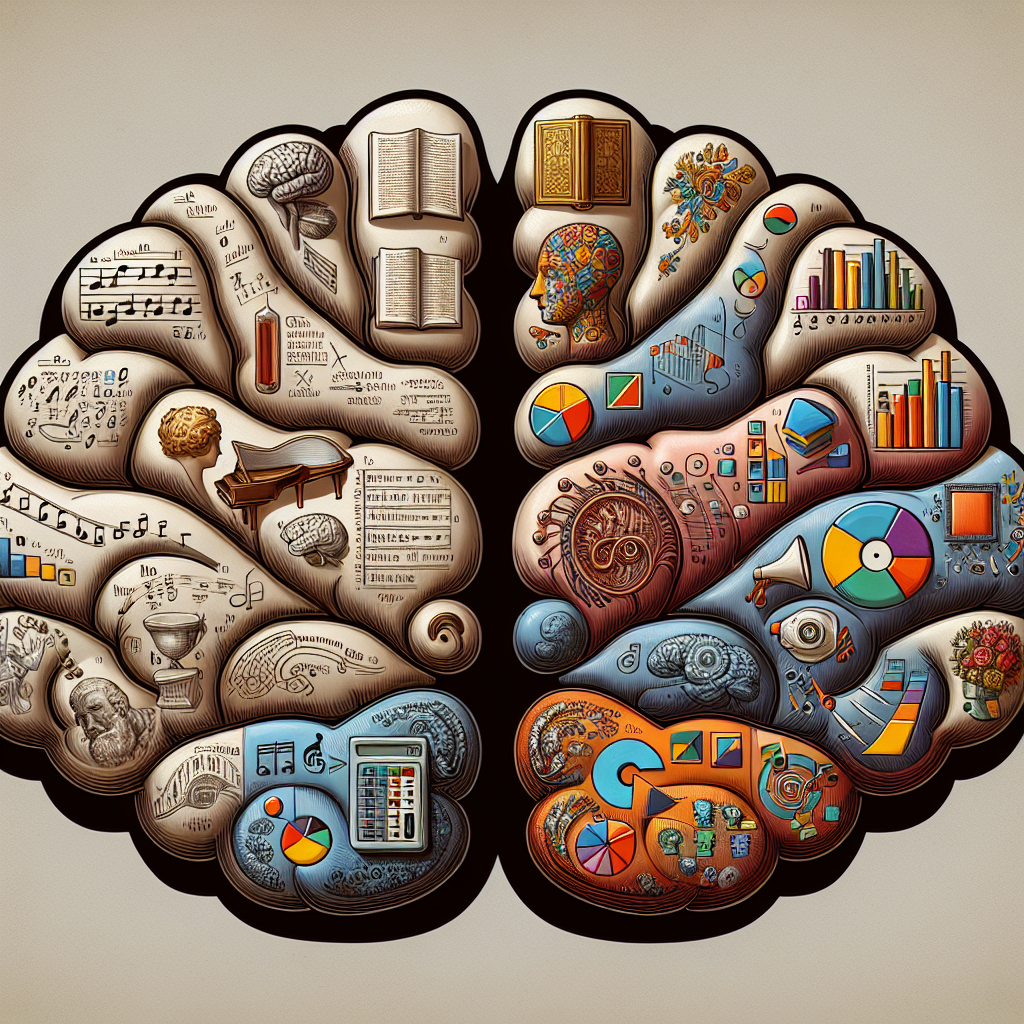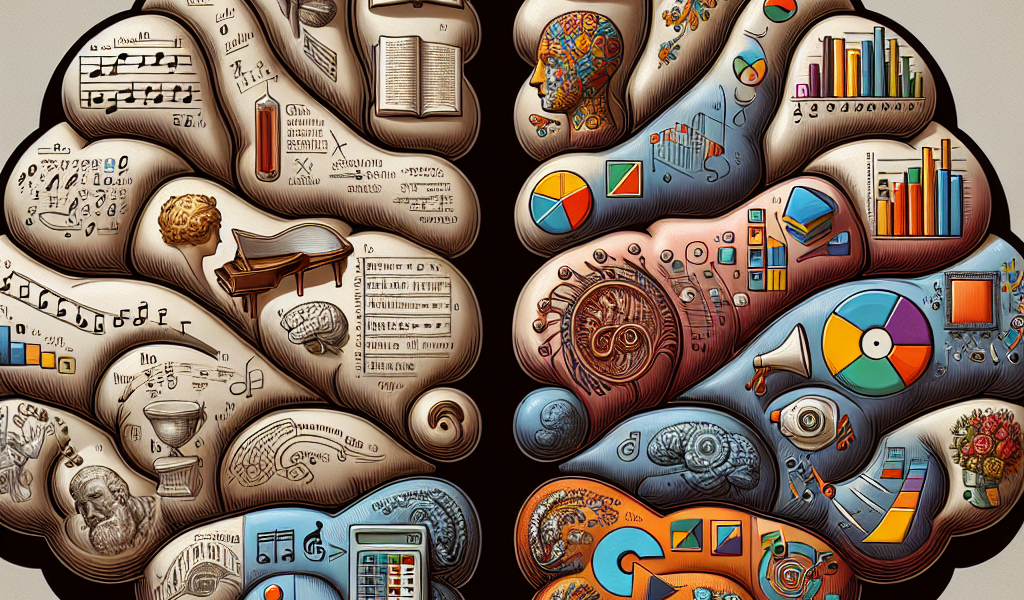Are There Different Memory Techniques For Remembering Different Types Of Information?
From the gripping symphonies of Mozart to the intricate math equations that thread our universe together, all wander into your mind’s intricate web—merely to get lost in its infinite labyrinth. The article, “Are There Different Memory Techniques For Remembering Different Types of Information?” will draw back the curtains on this often bewildering stage of memory. Let your imagination trudge through the methods that enhance remembering names and faces, musical scores, foreign languages, and mathematical algorithms. Breaking away from the monotonous, one-size-fits-all memory approach, this intriguing read will spark your curiosity as you unearth a treasure trove of specialized memory-enhancing techniques suited to various types of content that your brain encounters.

Understanding Memory and Recall
As you delve into the realm of cognitive processes, memory and recall ensnare fascination not merely for scientific curiosity but because they’re at the core of our daily functioning. Undeniably, memory serves as a key function in retaining and retrieving information with aplomb.
The Concept of Memory
Memory is a dynamic system, akin to a bustling cityscape, where information is ceaselessly transferred, stored, and retrieved. It is an intricate network of neural processes enabling you to remember facts, stories, impressions, and skills. But what truly makes this scientific marvel engaging is its complexity and the mystery that still surrounds it.
Short-Term vs. Long-Term Memory
Two cornerstones of the memory city are the short-term memory (STM) and long-term memory (LTM). Your STM is comparable to a small sticky note, holding a few pieces of information temporarily. This could range from remembering a phone number to holding onto a thought you want to share. Contrastingly, your LTM is like a vast library, storing and retrieving information over seemingly endless periods.
Functions and Importance of Recall
Think of recall as the diligent librarian, guiding you through the labyrinth of information stored in your memory. It is essential in the learning process, helping you retrieve knowledge stored in LTM when you need it. Everything from recognizing an old friend, reciting a poem, or riding a bicycle hinges on the effectiveness of the recall process.
Memory Techniques for Remembering Textual Information
Here’s the curiosity: your memory is not one-size-fits-all. different types of information call for distinctive memory techniques.
Chunking Information
Imagine your STM as a suitcase. To fit more, you need to arrange your clothes neatly, not just throw everything in. Similarly, break down voluminous information into smaller, manageable chunks, facilitating easier mental packing.
Use of Mnemonics
Mnemonics are like your memory’s secret codes, converting information into a form that’s easier to remember. They could be acronyms, short poems, or a memorable phrase that helps to grasp complex information effectively.
Repetition and Re-reading
Recall techniques can be as simple as re-reading and repeating the information. Just as repeated encounters with a person make their name easier to remember, the same stands for textual information.
Taking Notes
Your memory loves when you personalize information. By taking notes, you are encoding the information in your own style and language, creating a more personalized memory trace.
Memory Techniques for Remembering Visual Information
Visual memory holds a special place within the panorama of memories given its robust and durable nature.
Method of Loci
You could create a memory palace, or use the Method of Loci, by visualizing a familiar pathway with distinct landmarks and attaching pieces of information to each.
Creating Visual Associations
Forge fun and bizarre associations for remembering pieces of visual information. The more ridiculous the association, the more likely it is to stick in your memory!
Drawing Diagrams
pictures and diagrams are powerful memory boosters. They simplify complex information into an easily digestible, visually appealing form.
Using Color Codes
Color your information. Using different colors and highlighting can act as visual markers, enhancing the recall process.

Memory Techniques for Remembering Numerical Information
Numbers might be a hard nut to crack for your memory. Fear not, for there are specific techniques you can use.
The Number-Shape System
In this system, each numeral is equated to a shape that resembles it. This facilitates remembering figures as images and not just abstract numbers.
Pegword Method
This method involves associating numbers with pegwords (items, usually in a pre-memorized list), making them easier to recall.
The Major System
Another technique, the Major System, pairs numbers with consonant sounds. This allows you to convert numbers into words, creating memorable phrases or sentences.
Association Techniques
Associating numbers with other meaningful data such as dates of historical events, personal experiences, or significant measures can enhance recall.
Memory Techniques for Remembering Names and Faces
Names and faces, crucial social identifiers, yet often tricky to remember. Here we provide some strategies to help.
Visual Interaction Strategies
Creating an interactive scene in your mind linking the person’s features with their name can aid in recall.
Creating Personal Connections
Connect the person’s name or physical characteristics with something personally meaningful to you.
Attaching Information to Features
Associating names with salient facial features can act as an effective memory peg.
Elaborate Rehearsal
Engage in meaningful analysis of the information, as opposed to mere rudimentary repeating.
Memory Techniques for Remembering Spatial Information
Traipsing through mazes of unknown territories can be challenging. Here are some spatial memory enhancing techniques.
Using Landmarks
Landmarks serve as memory guides, helping you remember routes and directions.
Creating Mental Maps
Form a mental representation of the space, visualizing positions and sequences, like a virtual GPS in your mind.
The Route Method
Take the scenic route. Visualize yourself walking, enhance the experience with sensory information, which fastens the spatial layout in your memory.
Relating Positions to Personal Experiences
Connect various spatial positions to your experiences to build a rich narrative that is easy to remember.
Implementation of Memory Techniques
Knowing the techniques is half the battle. The other half is diligent implementation.
Building Consistency
using these techniques with consistency helps create a strong memory network.
Experimenting with Different Techniques
Not every strategy will work for you. Feel free to experiment and find what suits your style.
Strategic Practice
Incorporate these techniques within your daily activities. Turn memory-boosting into your second nature.
Importance of Relaxation and Rest
Last but not least, rest your mind. quality sleep consolidates memory and enhances recall.
Challenges in Implementing Memory Techniques
Like every good thing in life, embracing memory techniques has its hitches.
Procrastination and Forgetfulness
Revamp your mindset and keep persisting until memory techniques become a part of your cognitive lifestyle.
Distraction and Inability to Concentrate
In an era of information overload, training focus is critical. Start with short bursts and increase gradually.
Overdependence on Single Method
Remember the adage, “Don’t put all your eggs in one basket”. Diversify across multiple techniques for overall improvement.
Effectiveness of Different Memory Techniques
Not all techniques yield an equal harvest of memory enhancement.
Comparing Success Rates of Different Methods
Some methods will bear more fruit, others less. The key is to keep experimenting to see what works best for you.
Factors Influencing Effectiveness
Whilst using these techniques, consider factors like external environment, physical health, and emotional states that might affect memory performance.
Adaptability of Techniques to Different Information Types
Experimenting across different information types helps in determining the techniques most adaptable and fruitful for each type.
Future of Memory Improvement Techniques
The future holds promising development in the field of memory enhancement.
Role of Technology in Memory Improvement
From memory enhancing apps to neurofeedback techniques, technology can be a potential game changer.
Influence of Lifestyle Changes
Changes in diet, fitness, reducing stress, and a healthier lifestyle can significantly boost memory performance.
Benefits of Continued Research and Development
Continued investment into cognitive research yields a more nuanced understanding of memory, opening doors to more effective memory enhancing techniques.
In conclusion, your memory is a complex, adaptable, and resilient powerhouse of potential. With these memory-enhancing techniques coupled with consistent practice, journey on to unlock the vaults of your memory!

